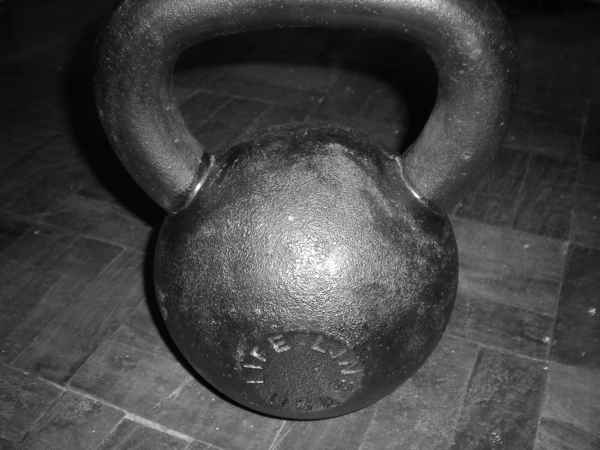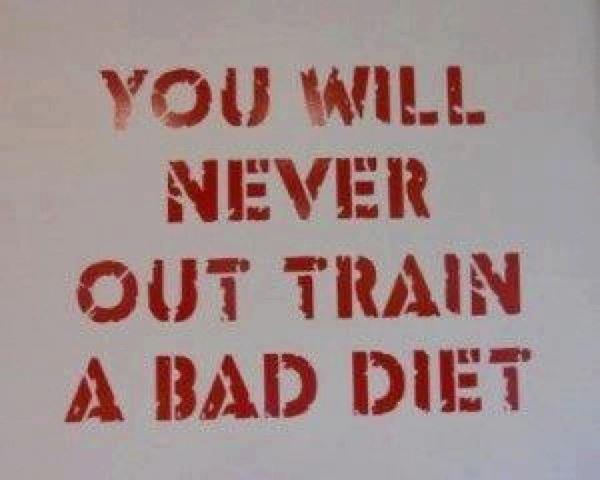
What is the best form of cardio workout for fat loss and overall fitness? High intensity interval training (HIIT) or lower intensity intensity steady state (LISS)?
Let me first define these two approaches in general terms:
HIIT and LISS Defined
HIIT (high intensity interval training) refers to brief periods of intense exercise followed by periods of rest/recovery. Technically HIIT is much more intense than the typical interval training most people do. But for the purposes of this article I won’t differentiate between HIIT and any form of interval training.
LISS (lower intensity steady state) training is what most people think of when you say “cardio”–some form of exercise designed to keep the heart rate up for an extended period of time (like walking/jogging on a treadmill for 30-45 minutes).
Let me also clarify a couple of misconceptions that have been circulating for years in the fitness world.
Burning Fat/Calories: Misconceptions
Aerobics and the “fat burn zone”: I remember hearing about this since the 80’s. The argument is that fat can only be burned in an aerobic environment. According to this logic, less intense exercise is actually superior for fat loss.
Interval training and the “after burn”: Advocates of interval training have argued it causes you to burn calories at an accelerated rate even after you have finished exercising. This, they argue, makes it superior to steady state aerobics.
Confused? Don’t feel bad–I was, too. I spent years believing the “fat burn zone” made steady state aerobics the best way to get lean. Then I spent a few more years believing the “after burn” was a huge factor in burning extra calories.
So which argument is true? Lower intensity aerobic training does tend to burn a greater percentage of calories from fat. But you could burn more calories from intense training, and these calories would eventually come from your fat stores (assuming you are eating fewer calories than you are consuming). And while intense training does cause an “after burn” effect, the number of actual calories burned this way is insignificant.1 So while both the “fat burning zone” and the “after burn” are technically true, they are practically worthless–choosing your form of exercise based on these concepts alone would be a mistake.
Advantages of Interval Training/HIIT
Now let me share my personal bias: I prefer HIIT as my main method of cardiovascular training. Traditional (steady state) cardio just bores me, and I never have been able to make myself do it on a consistent basis. Here are a few of the practical advantages that come to mind with HIIT:
1. It is time-efficient: You can burn more calories in less time with interval training. This has become increasingly important to me–I love to train, but I don’t like spending all day in the gym.
2. It is interesting/challenging: I find more intensive training to be much more enjoyable than spending 45 minutes going the same speed on a treadmill. I’m not alone in this–I believe this is one reason movements like Crossfit have become so popular.
3. It seems more practical for athletes: Most sports are anaerobic in nature: MMA, soccer, football, boxing, and basketball to name a few. Competing in these requires bursts of speed, strength and power. Come to think of it, most emergency situations (escaping danger, defending yourself, etc.) are also anaerobic.
Interval Training: Research
Much of the current research also favors interval training. Let’s look at a few studies:
One study compared three groups of young women. One group did interval training (3x/week), one group did steady state training (also 3x/week), and one group did no training (the control group) for 15 weeks. Subjects doing the interval training worked their way up to 20 minute training sessions by the end of the experiment. Those assigned to do steady state training also progressively increased the length of exercise sessions until they could train for 40 minutes. Both exercising groups saw improvements in their cardiovascular fitness, but only those who did the interval training experienced significant fat loss and improved insulin sensitivity (and they achieved these results with half the training time as the steady state group). 2
Researchers recently looked at several studies comparing HIIT with LISS training. This research is particularly interesting because some of the studies involved subjects with cardiovascular and metabolic disease. They found that those who incorporated interval training into their routines showed equal or greater improvements in aerobic fitness than those who trained with only moderate intensity: In conclusion, HIT appears to promote superior improvements in aerobic fitness and similar improvements in some cardiometabolic risk factors in comparison to CME, when performed by healthy subjects or clinical patients for at least 8-12 weeks. 3
I’ll mention one final study since I’ve brought up metabolic disease. Researchers tested eight subjects with type 2 diabetes to see how interval training might help them. They did six sessions of HIIT over a period of two weeks. Positive, measurable improvements in the subjects’ hyperglycemia (blood glucose levels, etc.) and mitochondrial capacity were observed after only two weeks. The researchers noted the relatively low time commitment involved with this kind of exercise.4
To summarize, HIIT is more time efficient, tends to have a greater metabolic impact, and is at least as effective for aerobic improvements as LISS. This makes it my choice for cardiovascular conditioning and burning extra calories. I usually add some circuits from Renegade Cardio to the end of my weight training sessions as “finishers.”
Advantages of Steady-State Cardio (LISS)
Does that mean we should completely avoid LISS? Not necessarily. There’s something we should keep in mind with these studies I’ve cited: they were not combining weight training with the cardio sessions as far as I can tell. In other words, the type of cardio you use is not nearly as important when resistant training is your primary exercise strategy (which it should be). With this in mind, here are a few advantages to LISS:
1. Like interval training, it helps you burn extra calories. Adding a few sessions of steady-state cardio to your weekly schedule is a simple way to help you reach your fat loss goals more quickly.
2. It can be done when energy levels are too low for more intense training. Some brisk walking may be all you can do right after an intense leg training session (or maybe even the day after).
3. There may be less potential for injury. You may be unable to safely perform intense exercise for various reasons (including fatigue from weight training).
Conclusion
I prefer interval training, but I’m not ready to jump on the bandwagon with those who say steady-state cardio is useless.
Check out my article on Cardio and Weights for suggestions on integrating cardiovascular conditioning with your weight training.
References:
1. J Sports Sci. 2006 Dec;24(12):1247-64. Effects of exercise intensity and duration on the excess post-exercise oxygen consumption.
2. Int J Obes (Lond). 2008 Apr;32(4):684-91. Epub 2008 Jan 15. The effects of high-intensity intermittent exercise training on fat loss and fasting insulin levels of young women.
3. Sports Med. 2012 Jun 1;42(6):489-509. The potential for high-intensity interval training to reduce cardiometabolic disease risk.
4. J Appl Physiol. 2011 Dec;111(6):1554-60. Epub 2011 Aug 25. Low-volume high-intensity interval training reduces hyperglycemia and increases muscle mitochondrial capacity in patients with type 2 diabetes.
Note: I’m grateful to Abbie E. Smith-Ryan, PhD, for directing me to most of the studies cited in this post.
